We all know first impressions matter in the world of retail. Even if you have the finest selection of merchandise in your store, it won't matter if your window display fails to bring in customers.
By contrast, a creative display of your products can make even ordinary items seem valuable in potential shoppers' eyes.
When it comes to the art of retail display, many businesses stick to tried-and-true methods such as slapping an outfit on a mannequin or creating a seasonal window display.
Here, we've gathered some of the most effective creative display ideas out there to help you break out of the ordinary and draw more customers into your store.
1. Consider creating a “theme” for your store
One of the best ways to ensure that your retail display stands out from the competition is to set a “theme,” or cohesive visual language, for your store layout.
By creating a cohesive “feel” throughout your store, you’ll ensure that any item you decide to showcase will feel harmonious with its surroundings, thus enticing your customers to make a purchase.
When deciding on a theme, it’s important to consider what type of retailer you are, as the general look and feel of your store should reflect what you’re selling.
One store whose design certainly stands out is the Nike House of Innovation in Shanghai, which features graphic elements and ultra-modern lighting throughout. Here, the design complements the visual merchandising, showcasing the brand’s high-tech workout gear in the most favorable light.
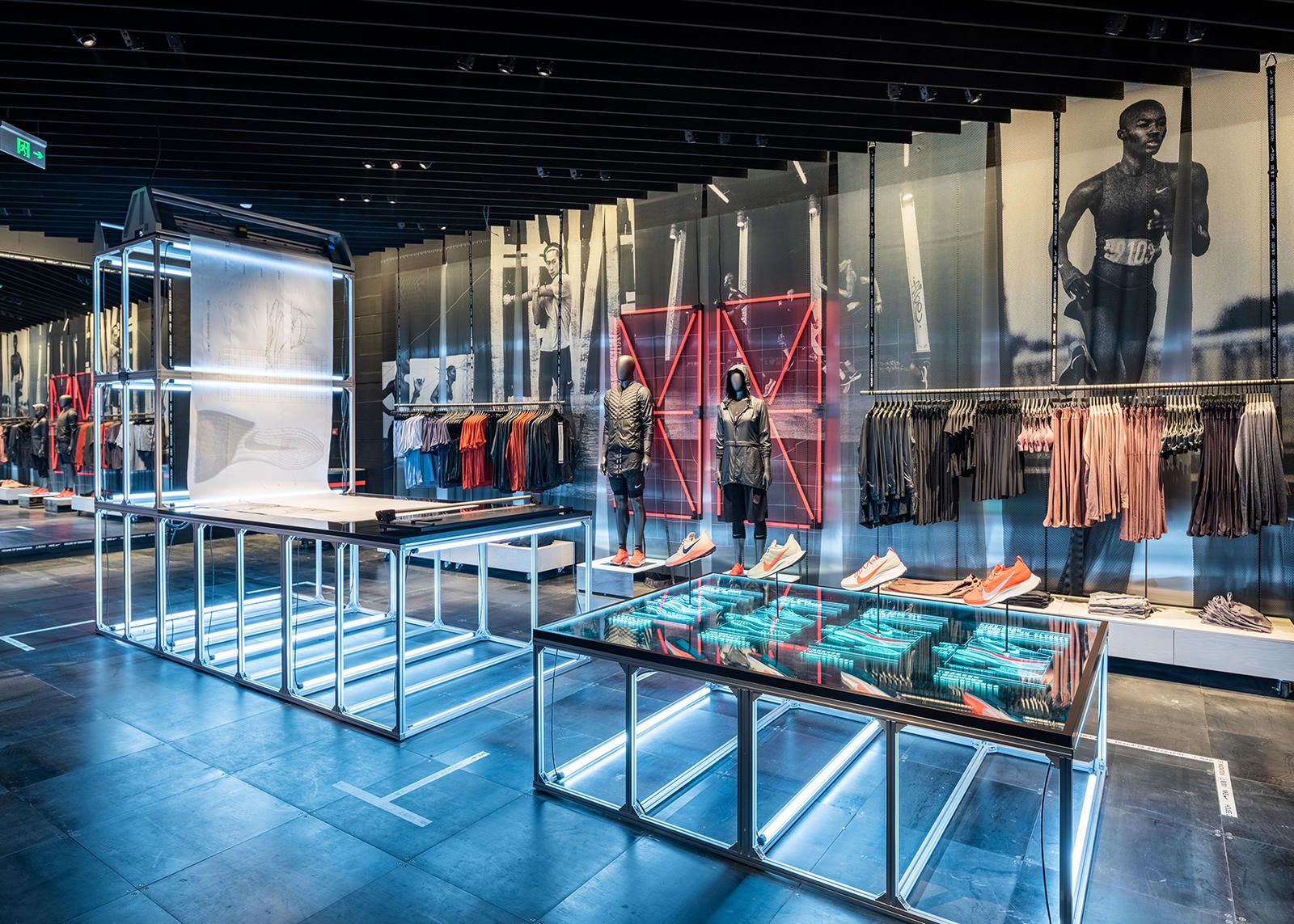
2. Turn your merchandise into artwork
One way to get people talking about your store is to impress them with art. The good news is that you don’t have to go out and spend much money on bespoke works of art, as many retailers—particularly those that specialize in clothing—can rely on creative store merchandising to grab the attention of their customers.
One great way to ensure that your creative display resonates with your customers is to use your own merchandise as artwork.
Turkish denim company LTB Jeans is a great example, as the brand uses its own selection of denim clothing to create a striking installation.
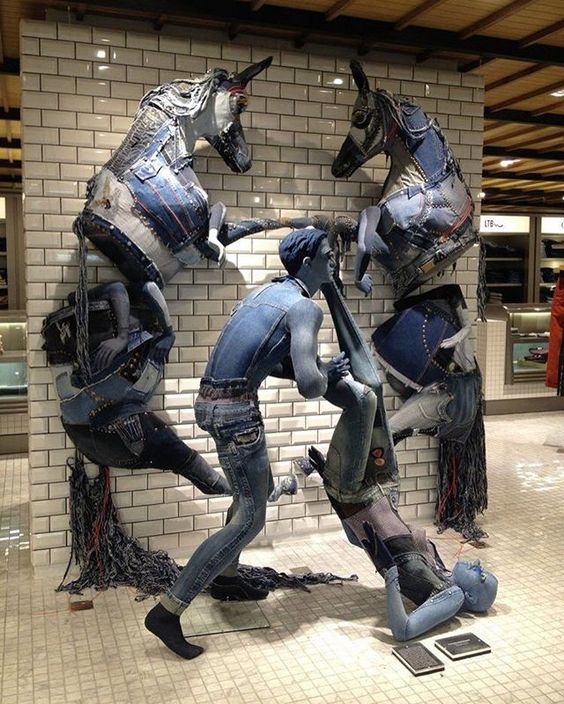
Click here to discover how your marketing efforts can increase your door traffic and how Dor can help you understand that data and other important metrics on a single screen.
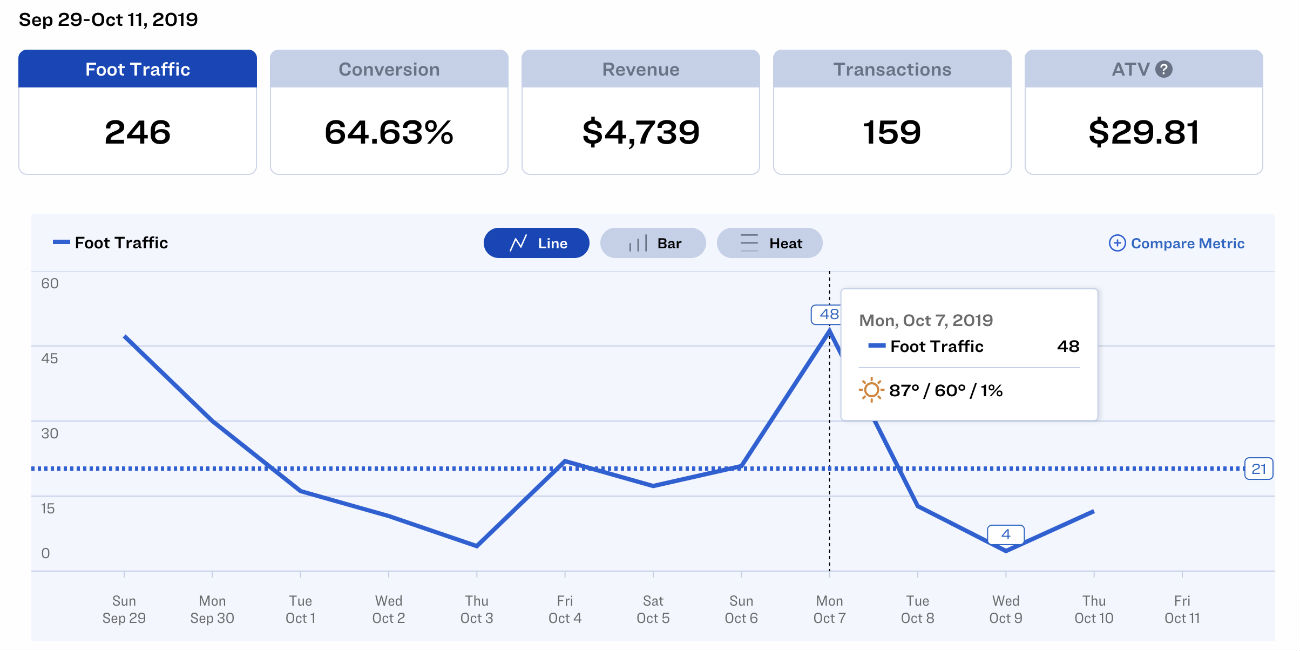
3. Invest in interactive displays
As technology evolves, so does the brick-and-mortar experience.
Nowadays, many stores rely on interactive displays and other digital solutions to help customers shop faster and with greater accuracy. From furniture retailers who use VR headsets to help customers visualize items in their own home to clothing stores that let shoppers peruse digital catalogs, it seems there’s no limit to what technology can do.
Related: The Ultimate Guide to Retail Analytics and The Future of Retail (2020)
One brand making full use of interactive displays in its brick-and-mortar shops is adidas. In late 2019, the adidas London flagship store on Oxford Street added a “Hype Wall” digital display on its ground floor where customers can book reminders for upcoming releases via an app, thus encouraging interaction with the brand.
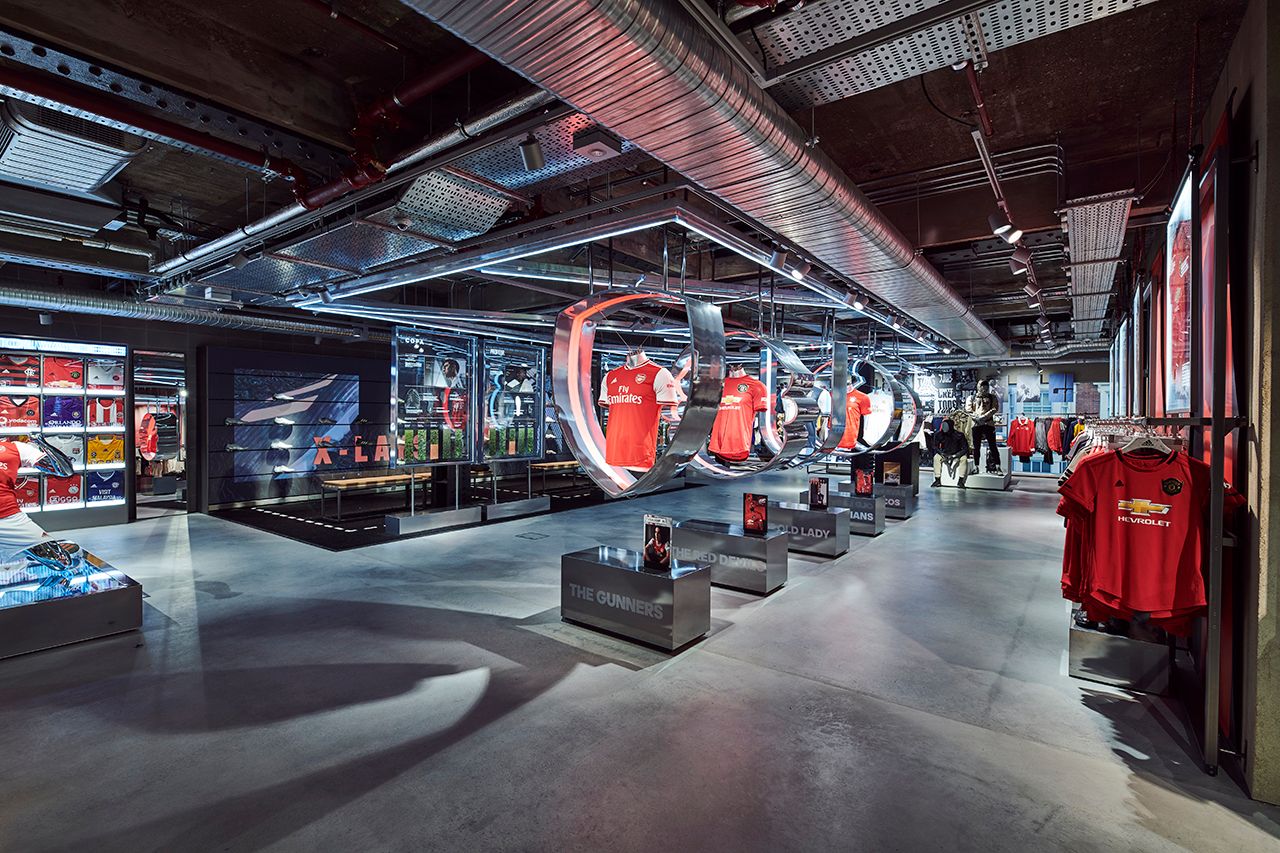
4. Use scent to your advantage
It’s no secret that humans are drawn to pleasant smells, so why not use it to set your store apart from the rest? Just take a cue from cosmetics retailer Lush, whose stores never fail to capture the attention of passers-by thanks to their enticing scent.
Even if you don’t run a fragrance-forward brand like Lush, you can still invest in a dedicated scent for your store to trigger a sensory connection in your customers and increase foot traffic to your store. Just be sure to pick a scent that isn’t too intense—the last thing you’d want is for potential customers to walk out of your store because they found the scent overpowering.
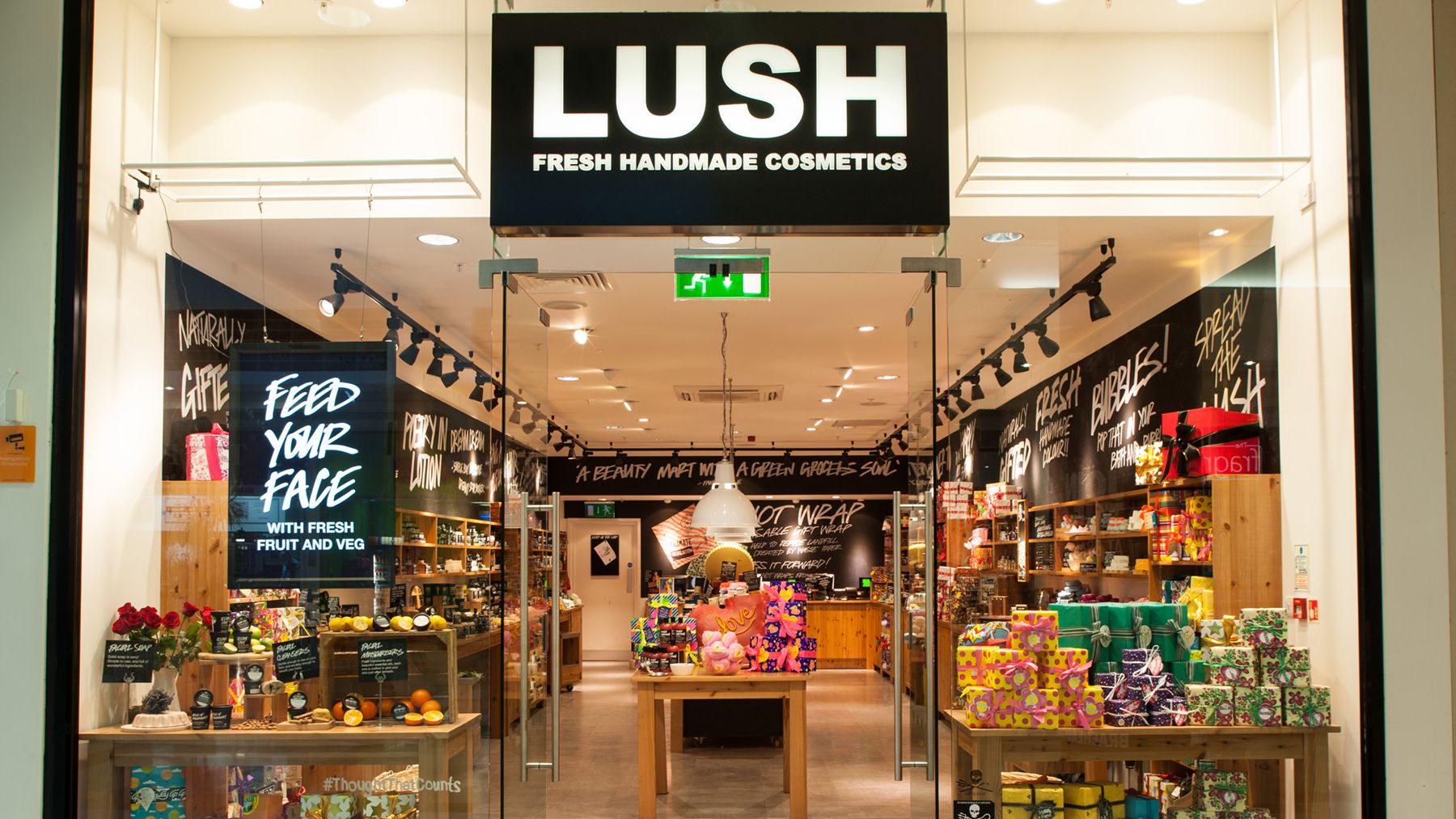
5. Incorporate plants into your store design
Speaking of scents, have you noticed that many department stores have flowers, either in their window display or as part of their store merchandising? Whether real or artificial, fragrant or not, these flowers are included to evoke a connection to nature as well as imbue the store with a cozy ambiance.
If you find that keeping fresh flowers is too much of an investment for your retailer, you can also opt for low-maintenance plants to create the same effect. Take for example Anthropologie’s new store in Kent, United Kingdom, which incorporates plenty of plants into the shop design.
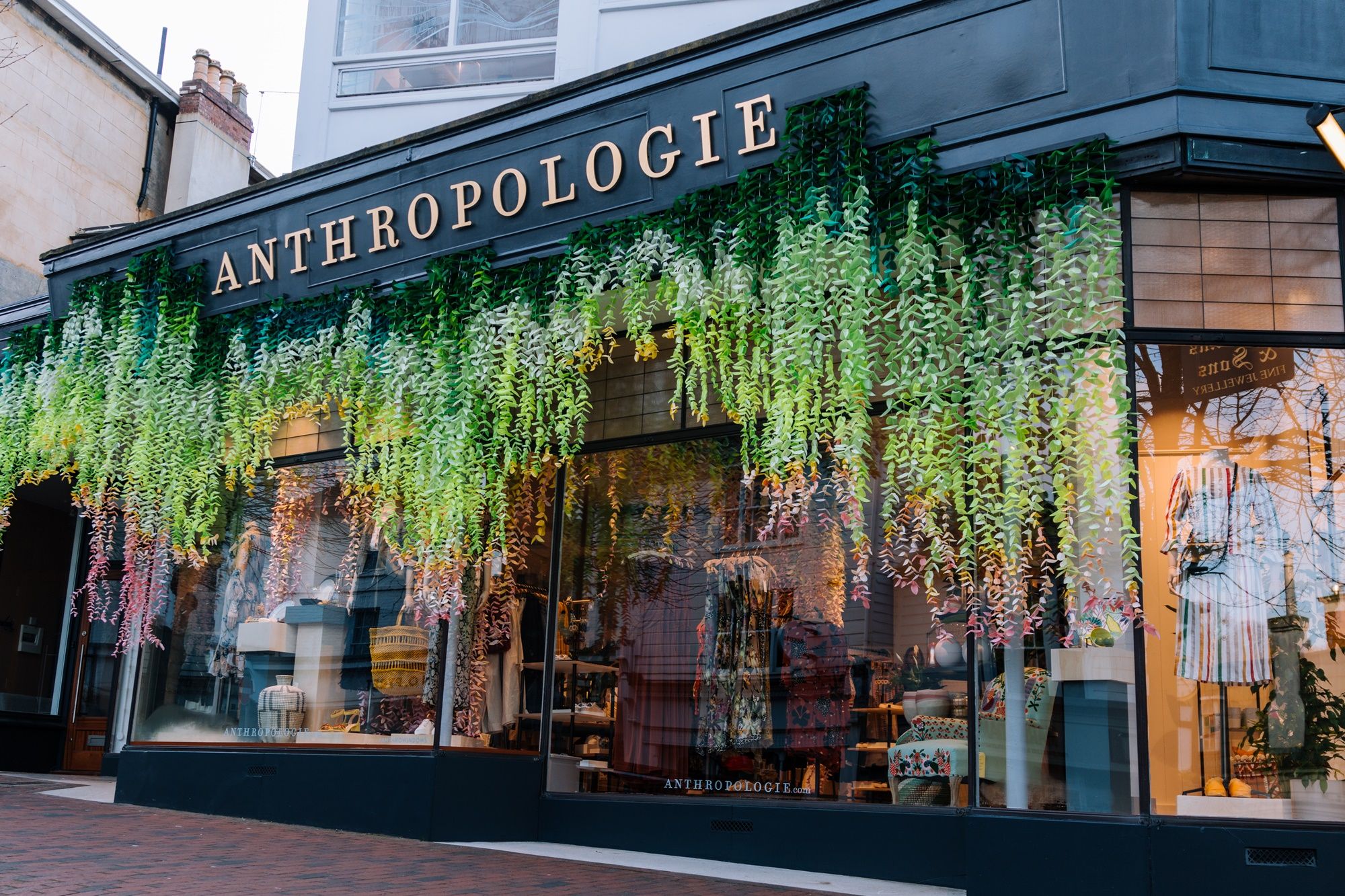
6. Think outside the box when it comes to product displays
Regardless of the type of retailer you manage, you don’t have to rely on traditional product display elements like prefabricated shelves and clothing racks. Instead, you can try upcycling items—particularly those related to your industry—to create a memorable display that will leave your customers in awe and even potentially increase foot traffic to your store.
Related: 40 Ideas to Boost Retail Foot Traffic and Increase Sales
One way to upcycle items for your retailer is to use things that wouldn’t normally be used, such as logs, pallets, doors, etc. For a dose of inspiration, check out the clothing shop Humanité Boutique in Bryson City, North Carolina, where the owner used shutters to create a one-of-a-kind clothing rack.
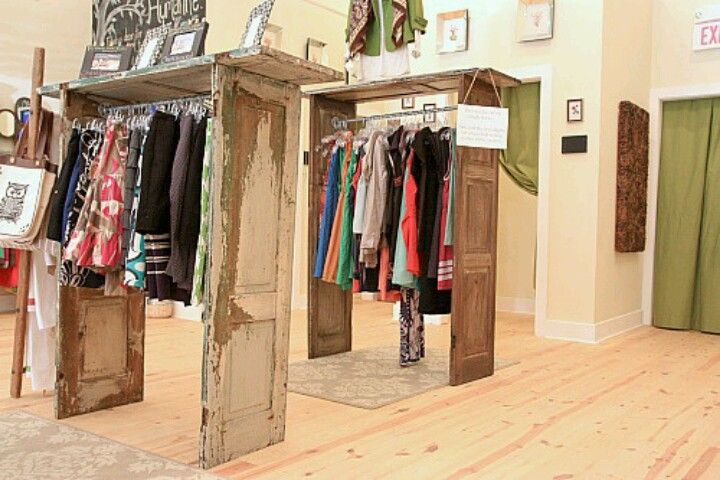
7. Drive last-minute purchases with enticing POS displays
It's no secret that customers are especially susceptible to making impulse purchases when waiting in line at the cash register or POS (point of sale), so why not use that information to your advantage? One great way to increase sales is to create a captivating POS display your customers simply can't ignore.
If you're looking for inspiration, check out this customized Milka POS display in Dubai Duty Free at Dubai International Airport, which incorporates the brand's famous cow image and purple color to grab the attention of any chocolate lover passing through the airport.
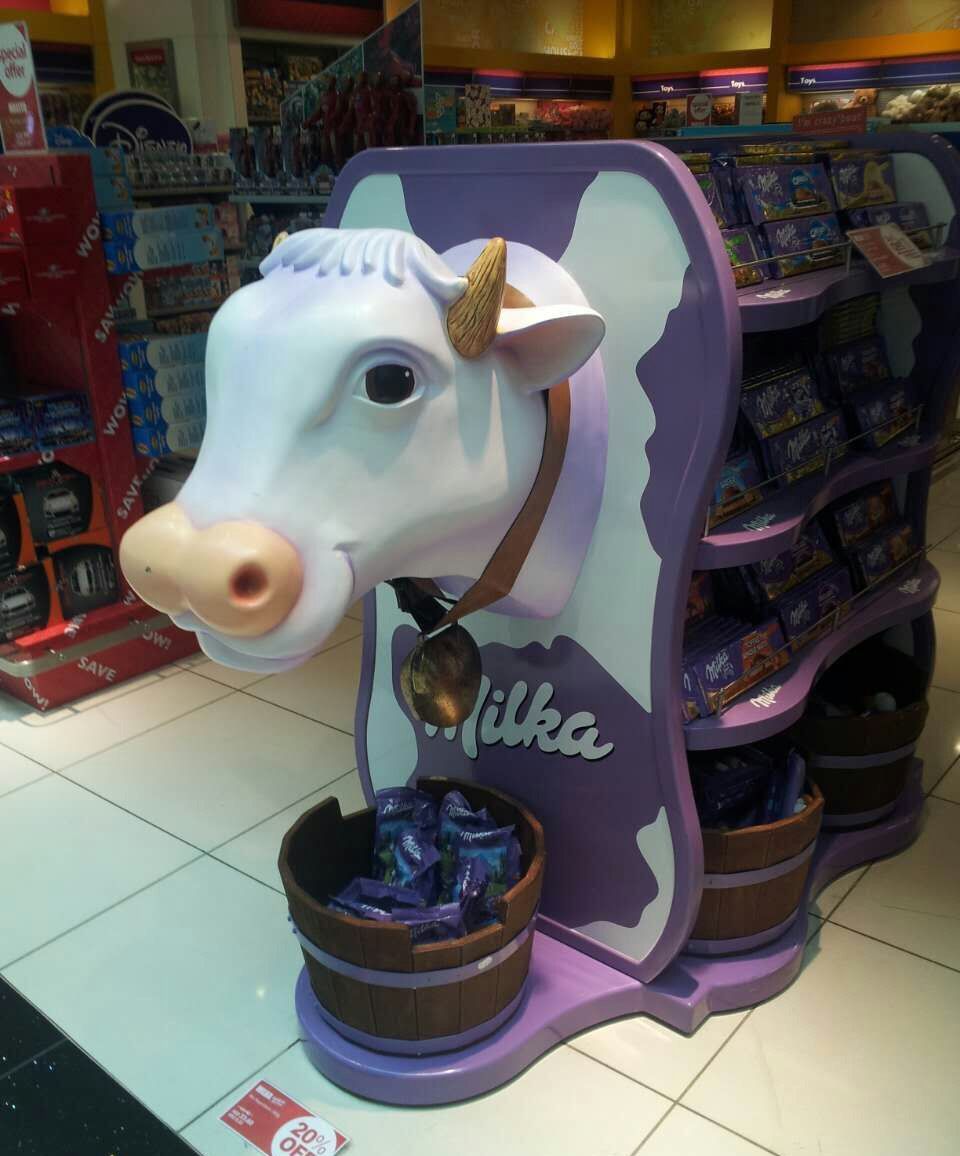
8. Create an “Instagram-worthy” display wall in your store
With the rise of social media, many retailers are beginning to take note and design their store layout accordingly.
One way to generate more shares and likes is to designate a specific part of your store and get creative: You can use a combination of witty quotes, creative merchandising ideas, or fun lighting and fixtures. The idea is to get people into your store and be unable to resist snapping photos for the 'gram.
Related: 15 Social Media Marketing Tips for Retailers to Increase Sales
Women’s clothing retailer Stylenanda Harajuku’s flagship store in Tokyo, Japan, includes this highly Instagrammable wall, which reads “Lovely Nanda Club”—a feature that is surely recognizable to the brand's 192,000 IG followers.
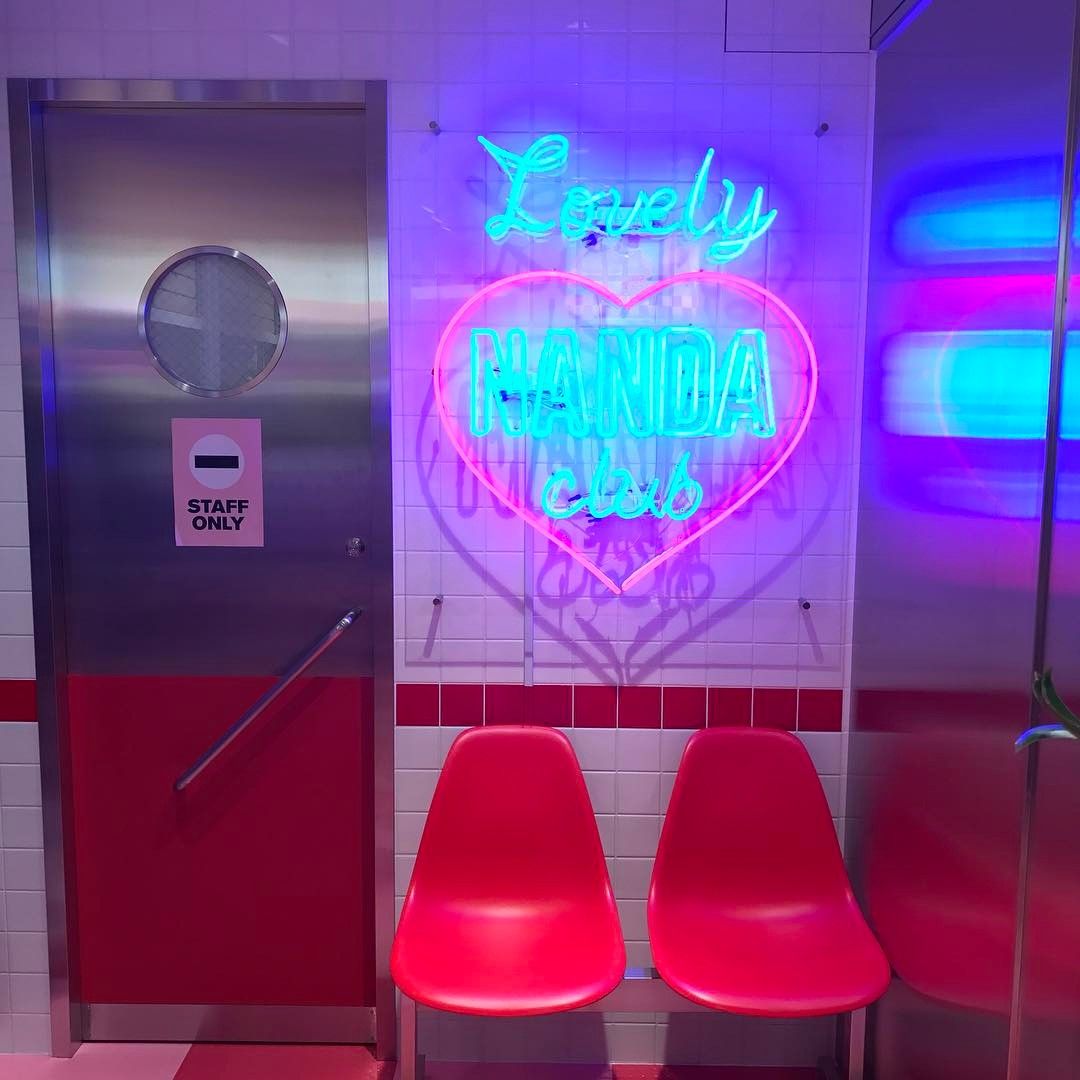
9. Get your staff to promote your merchandise
By getting your own staff to wear your merchandise, you kill two birds with one stone: Not only do you get to reinforce your brand identity, but you also have the opportunity to demonstrate these items' everyday use for your customers.
This idea is easiest for clothing retailers to adopt, but it also works for shops that specialize in goods such as jewelry, accessories, footwear, and even wearable technologies.
Related: 9 Proven Tactics to Improve Retail Employee Performance and Sales
One memorable example is Abercrombie & Fitch. Although A&F no longer requires its employees to wear strictly the brand’s own clothing, who can forget the impact their in-store models had on the brand’s success in the early 2000s?
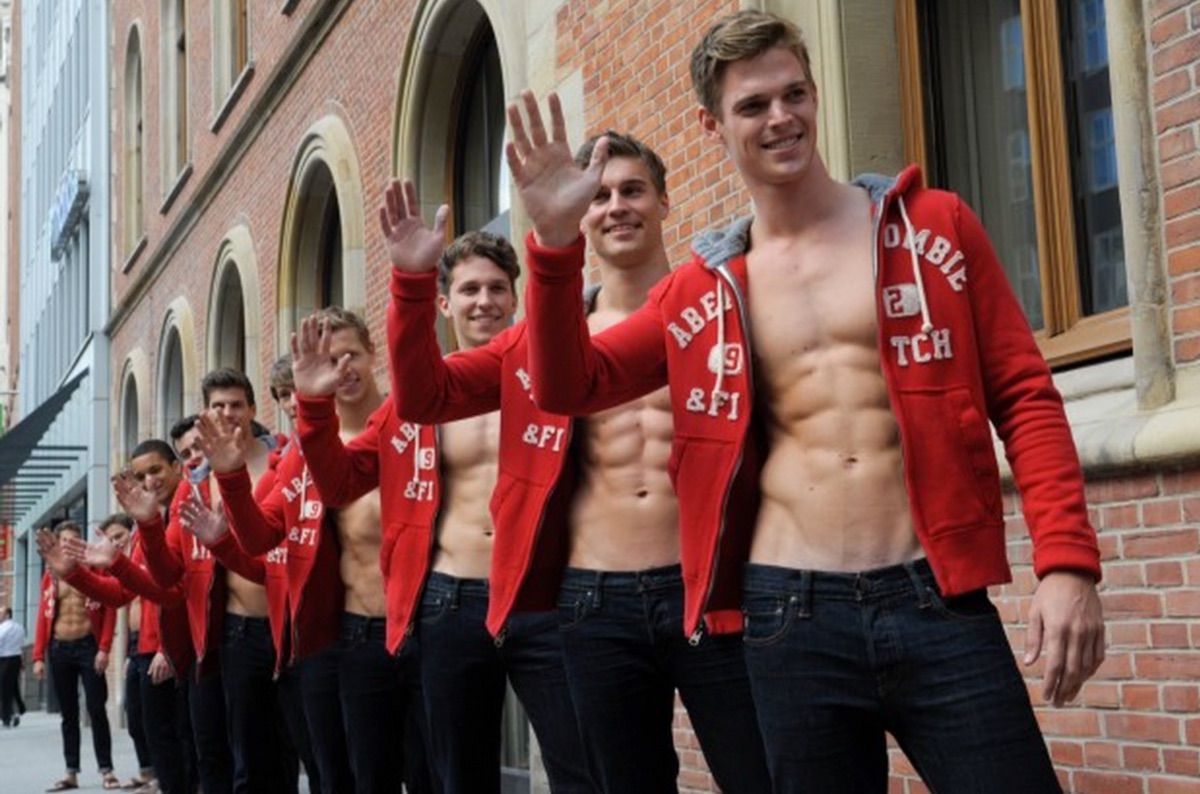
10. Get customers to try the products, too
Most shoppers are accustomed to trying on clothing, but what about other items like household appliances? By allowing your customers to try the product out, you’re giving them an experience that online shopping simply can’t beat.
Tech retailer Samsung recently launched Samsung Experience Stores, like this one at Roosevelt Field on Long Island, NY, where customers can try products before purchasing. These stores also give Samsung employees the chance to increase sales by offering additional products the customers may not have originally thought to purchase.
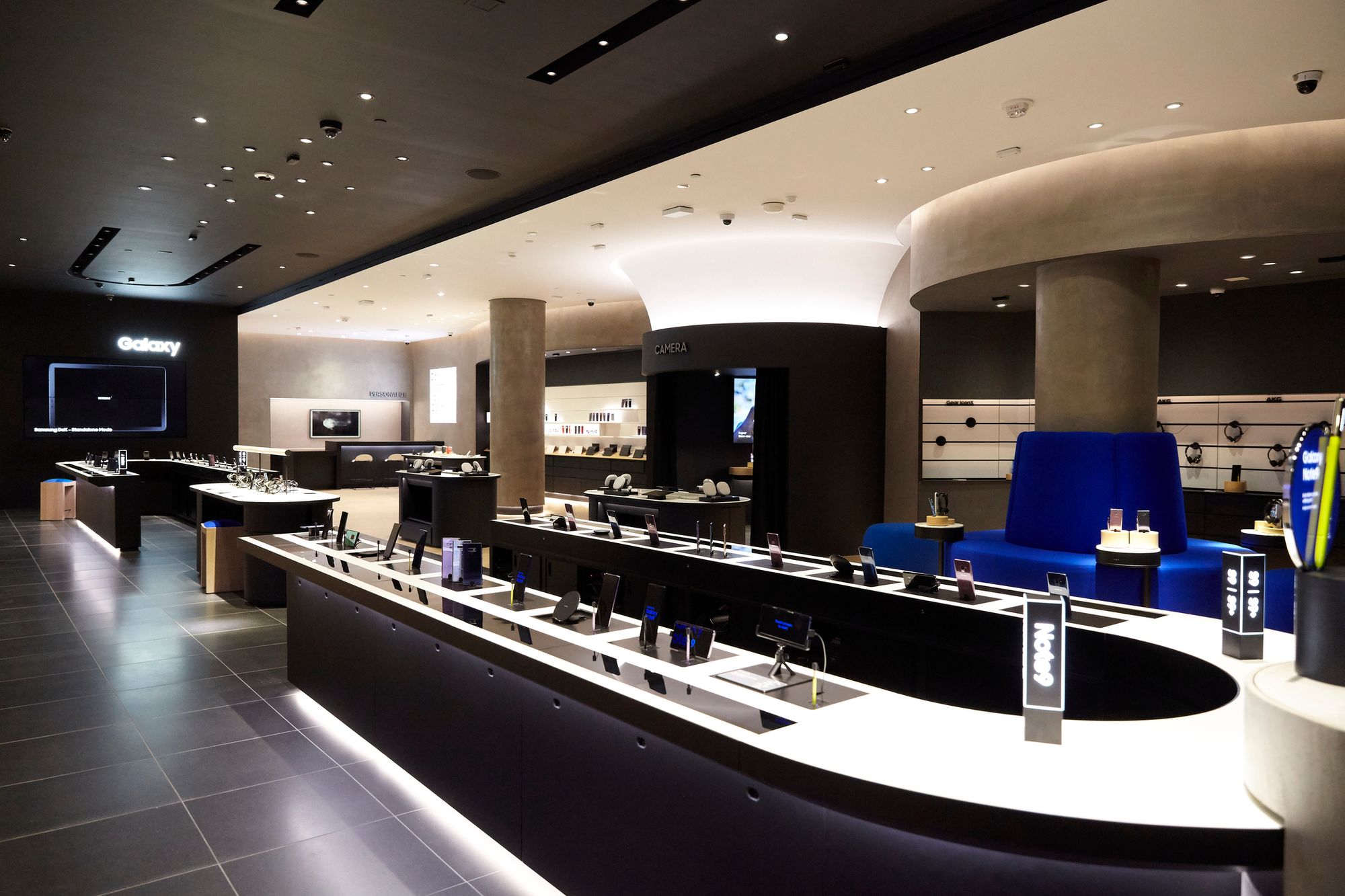
11. Consider your customers’ walking path
It's common store merchandising knowledge that seasonal displays should always be placed out front, but what about the rest of the store?
One good way to refine the layout of your store is to follow the same path your customers do as they walk around the space. Are the different sections of your store signposted clearly so that they're visible from every angle? Are your best-selling items scattered around the store, or are they all gathered in one place?
Related: 7 Factors That Affect Foot Traffic for Retailers
While you want customers to see as much of your merchandise as possible, it's also important to designate groups or sections so you don't overcrowd any one area of your store.
Furniture giant IKEA is a classic example of how visual merchandising can impact foot traffic in your store: Not only does IKEA place items so there is always something in the customer's line of vision, but the store literally guides the customer through its space with designated paths.
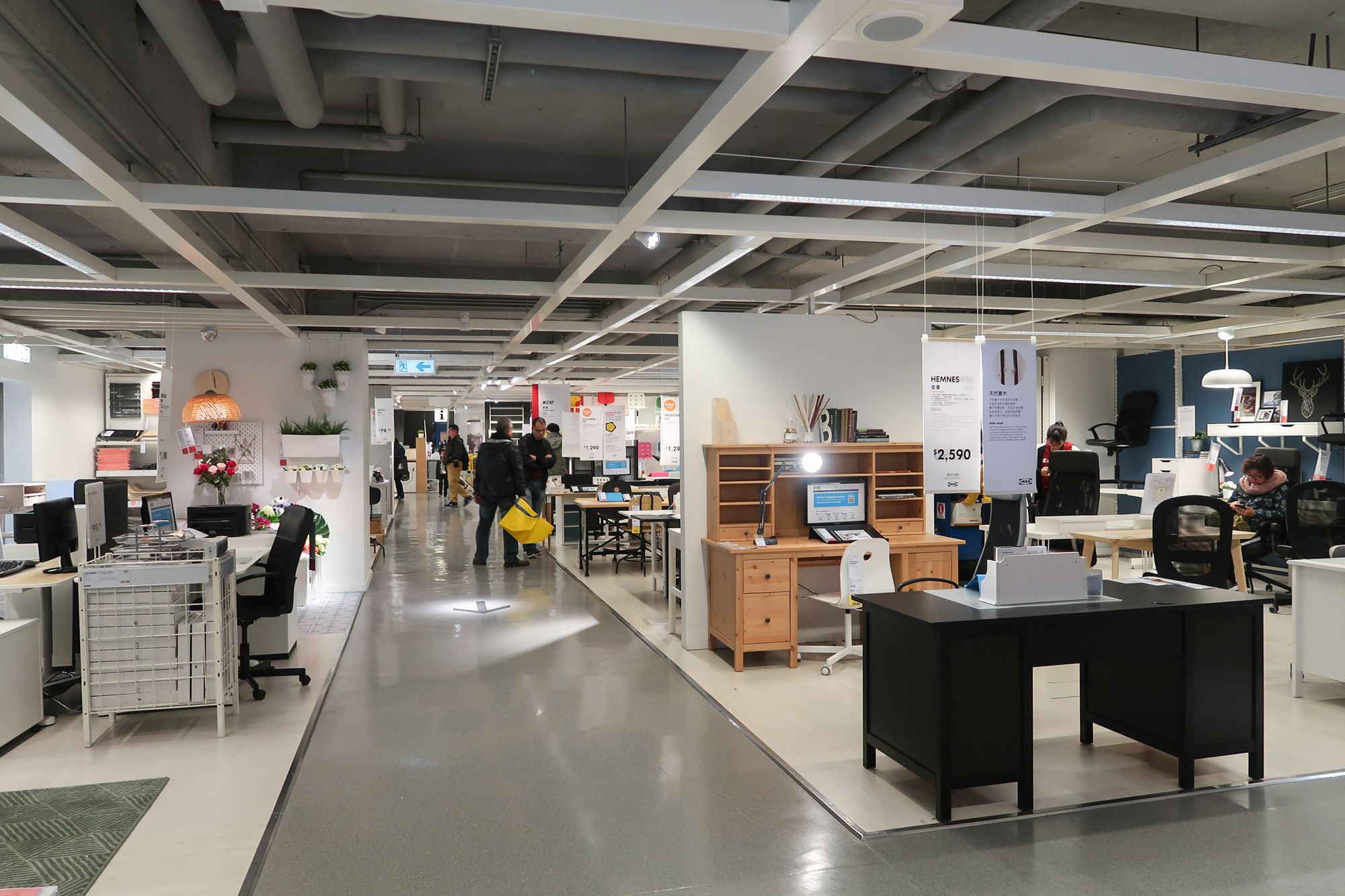
12. Harness the power of cross-merchandising
Cross-merchandising, or displaying products from different categories together, is a time-honored practice for most clothing retailers. Here, mannequins prove to be a great asset, as they help your customers visualize which products go well together. For that reason, clothing retailers are advised not to display a single item on a mannequin but rather to create a full "look".
Of course, it isn't just apparel retailers who utilize cross-merchandising to increase sales. For grocery stores and food retailers, this can take the form of grouping together frequently used products for events such as birthday celebrations or an outdoor barbecue.
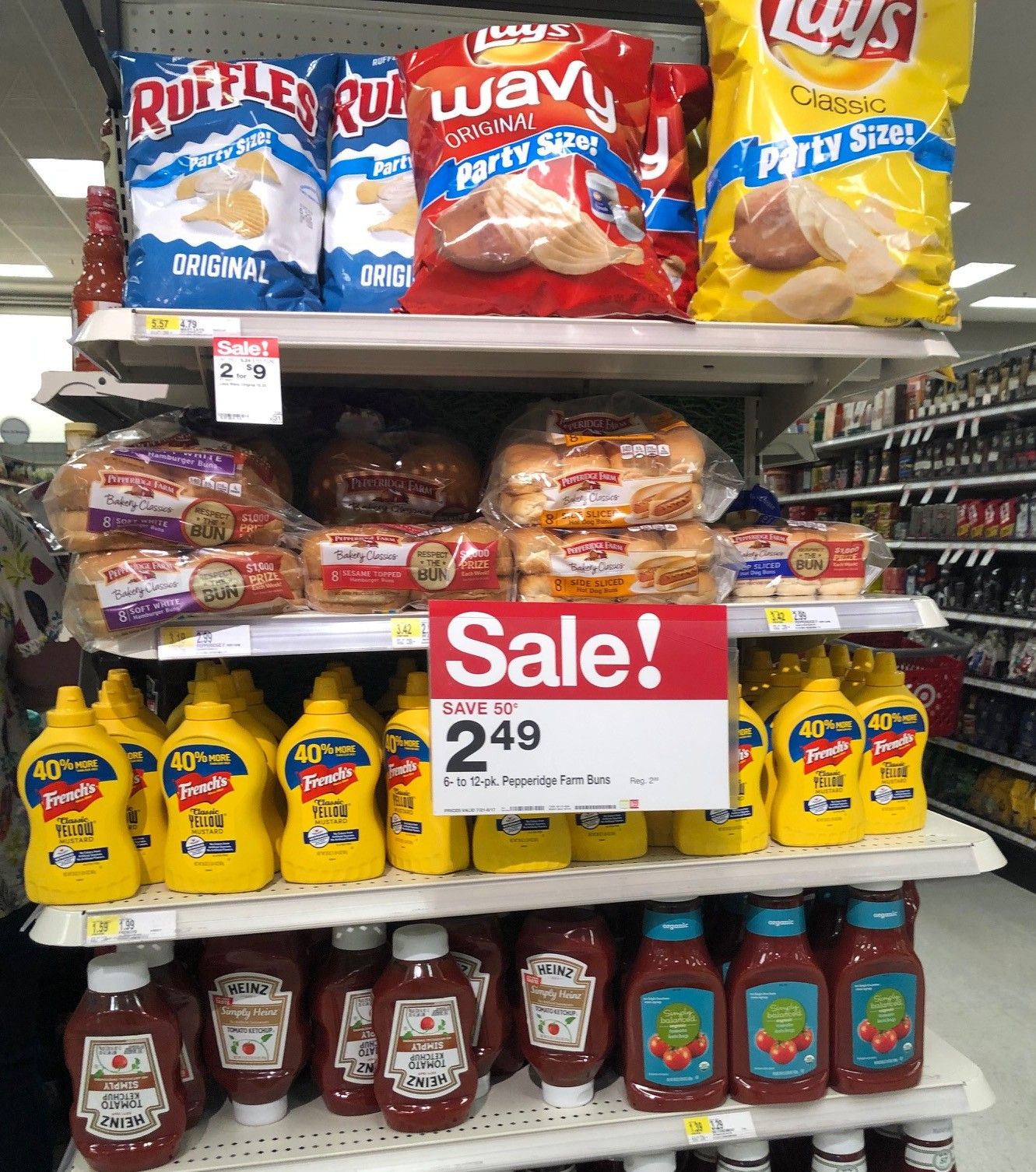
13. Find ways to keep customers in your store longer
We humans are easily manipulated: If we see a store with no one in it, we assume it’s because no one wants to shop there. By contrast, seeing more people in a store can evoke FOMO (fear of missing out) in us.
As a retailer, it is in your best interest to keep customers hanging out at your store, as it not only boosts foot traffic but also increases the likelihood that these customers will make additional purchases.
Related: How Small Businesses Can Utilize People Counting Solutions
In September 2019, London-based luxury department store Harvey Nichols opened a beauty and wellness space called “Beauty Harvey Nichols” at its flagship store in Knightsbridge where customers can get pampered with treatments and purchase the products used. Even if you can’t do a dedicated beauty center or café like larger retailers, you can set aside a lounge area for your customers to relax and enjoy some refreshments.
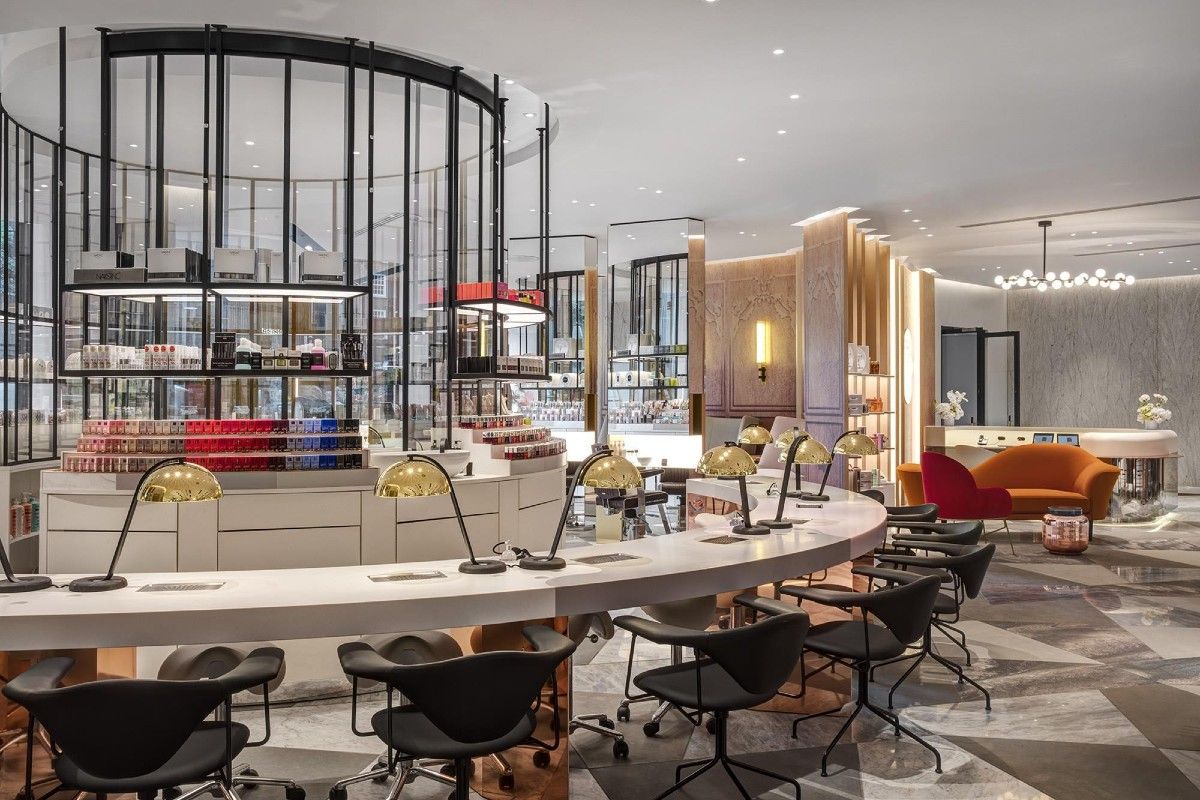
14. Get creative with your storefront
As a retailer, you want to encourage passers-by to walk into your store, whether or not they know the brand.
That's why it's important to pay attention to what's outside of your store as much as what lies inside. Instead of using a regular folding chalkboard sign outside your retailer, get inventive and try something new. Incorporate an eye-catching quote or drawing, or upcycle an unexpected item to serve as your signage. The sky is the limit!
For inspiration, check out this Urban Outfitters shop in Sacramento, CA, which relies on shadows to create the store's logo.
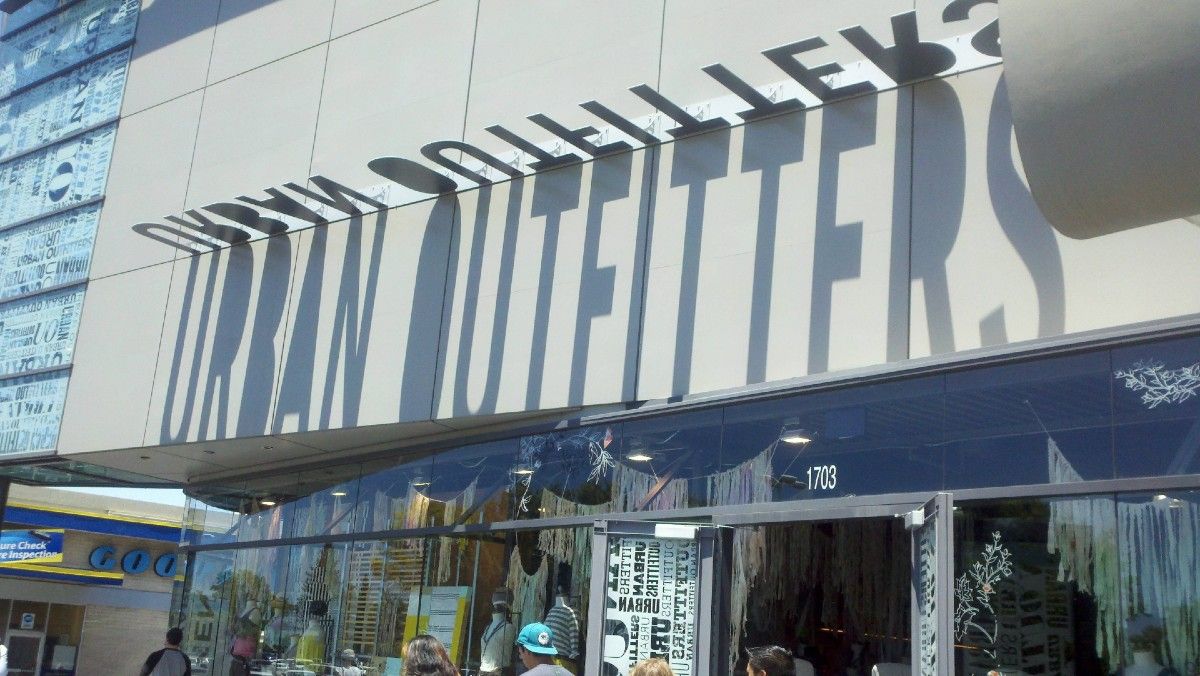
15. Have a place to entertain kids
This tip is great for kid-centric businesses like kids’ bookstores and toy shops, but it works for other retailers, as well.
For many moms, shopping with kids is a stressful affair, and that is the opposite of how you want your customers to feel in your store. By ensuring that the kids are having a good time, you can give mothers a much-needed opportunity to shop freely—which will get them to spend more time and hopefully more money at your store!
One retailer that's been offering activities for kids is Barnes & Noble. At its bookstores, B&N offers Storytime events for kids, free of charge. Even if your store isn't able to accommodate a full section devoted just to kids, you can try offering coloring books and crayons to keep your young visitors occupied.
